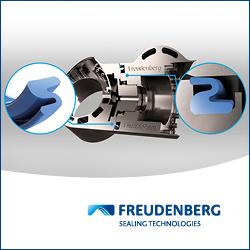Volumetric Tire Model as developed in MapleSim."
Researchers at the University of Waterloo use MapleSim in New Approach to Tire Modeling
Tires are a critical component in vehicle design. To save time and money in the design and development of new vehicles, automotive manufacturers typically use models to simulate the dynamic relationship between tires and road surfaces. Ideally, a tire model must accurately simulate the dynamics of the system and allow designers to vary its parameters, and simulations must also execute quickly.
The research team, led by Dr. John McPhee, Professor of Systems Design Engineering, and Dr. Joydeep Banerjee, Lead Researcher, used Maplesofts system-leveling modeling tool, MapleSim, to develop and test a volumetric tire model. "The volumetric tire model developed in MapleSim offers two distinct advantages over existing tire models," said Dr. Banerjee. "Since the moments are calculated using kinematic data only, the model can be easily programmed for numerical simulations. In addition, the resistive torques are evaluated as functions of both normal load and angular speed of the wheel."
Using Maple, Maplesofts advanced computation engine, the symbolic expressions for the normal force and rolling resistance were derived as a function of the position and orientation of the tire. The distributed friction forces were symbolically integrated over the tire contact patch to calculate the traction forces and self-aligning moments. The researchers then used MapleSim to develop the model using custom components derived from the Maple expressions.
To test the accuracy of the volumetric tire model, the model was used in a simulated drop test. An actual drop test was performed on a MICHELIN® 195/65 R15 summer tire inflated to 33 psi. The tire model was assembled to undergo the same motion as the actual drop test. Using MapleSim, the drop and rebound of the tire were simulated. Another commercially available tire model, selected from MapleSims extensive Tire Library, was also used to compare the results. When comparing the results of the two models, the MapleSim volumetric tire model provided a slightly more accurate estimate for the position of the wheel.
Initial results indicate that the MapleSim volumetric tire model is promising for use, not only for automobile tires, but for tires with higher camber angles, such as bicycle and motorcycle tires. To increase the fidelity of the model, the researchers plan on further testing of the volumetric tire model using data obtained from a Vehicle Measurement System (VMS). The VMS will provide information on the position, orientation and loads placed on the tire during actual driving tests of a vehicle.
"While the initial results from the model look promising, the data from the VMS can be used to further fine tune the parameters of the tire model," said Dr. McPhee. "Using MapleSim, we can take the analysis further by easily incorporating the tire model into detailed vehicle models for complete vehicle systems simulations."
*At the time of this research study, Dr. Joydeep Banerjee was a member of Dr. McPhees research team at the University of Waterloo. He is now employed with Maplesoft as an Application Engineer.
Featured Product

IP Seals for Robots
Freudenberg Sealing Technologies' IPRS (Ingress Protection Seals for Robots) provides reliable protection for robotic systems operating in harsh environments. Designed to prevent dust, moisture, chemicals, and wear from compromising performance, IPRS extends service life and reduces maintenance. The adaptive Z-shaped geometry ensures sealing integrity under continuous motion, making it ideal for high-speed automation and outdoor applications. Manufactured with high-performance elastomers such as Fluoroprene XP and EPDM, IPRS offers exceptional resistance to lubricants, cleaning agents, and extreme temperatures. This makes it the perfect solution for six-axis robots, SCARA robots, AMRs, AGVs, and cobots.
With its low-friction design and durable materials, IPRS enhances energy efficiency and operational reliability in industrial and autonomous robotics. Learn more about our IPRS Seals
